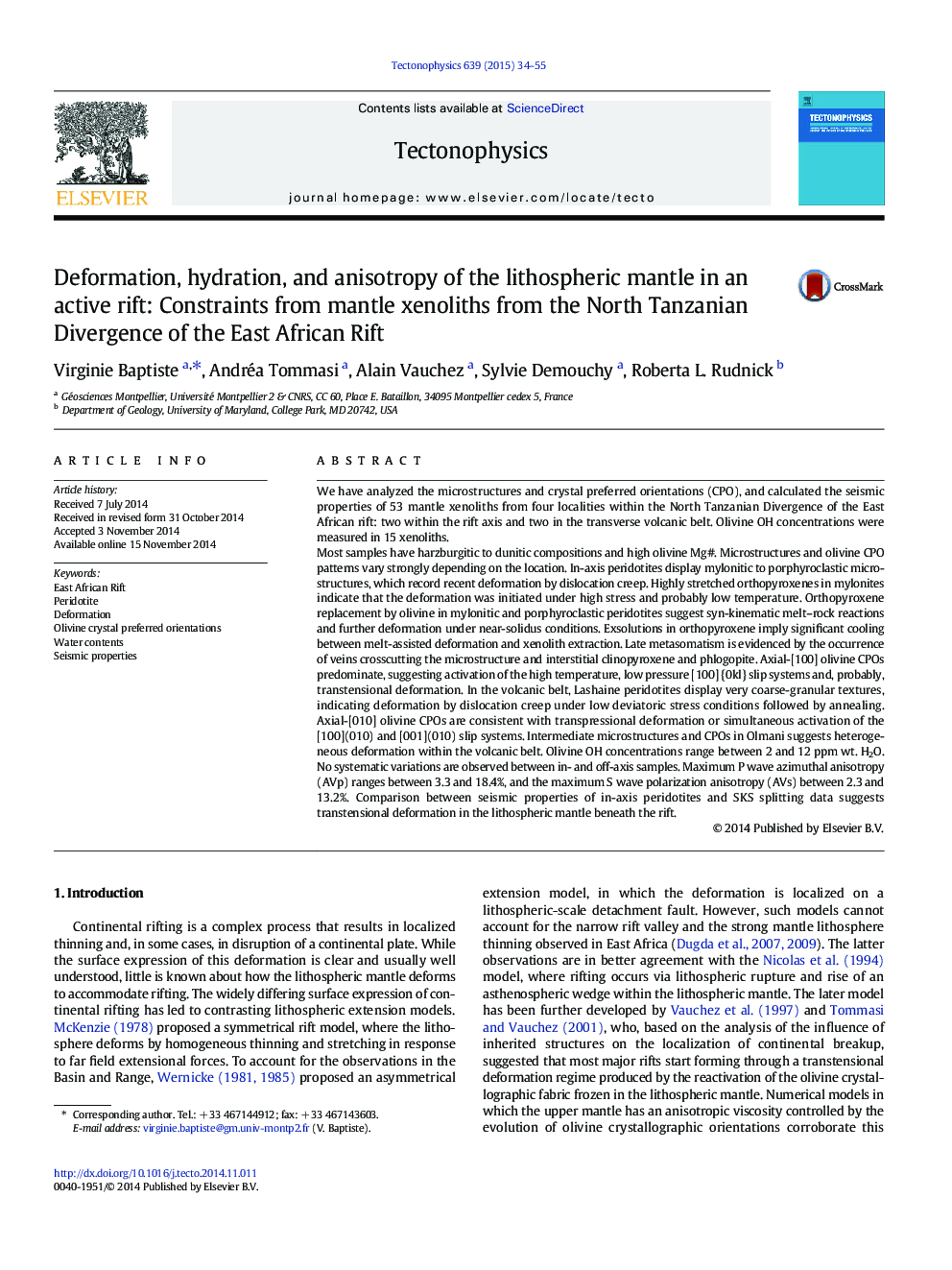| Article ID | Journal | Published Year | Pages | File Type |
|---|---|---|---|---|
| 4691771 | Tectonophysics | 2015 | 22 Pages |
•We examined deformation and water contents in peridotites from the East African rift.•Microstructures and olivine CPO vary strongly between in- and off-axis locations.•Water contents in olivine (2–12 wt. ppm H2O) do not vary systematically.•Microstructures in rift-axis peridotites indicate syn-kinematic melt–rock reactions.•Olivine CPO and SKS data suggest transtensional deformation within the rift.
We have analyzed the microstructures and crystal preferred orientations (CPO), and calculated the seismic properties of 53 mantle xenoliths from four localities within the North Tanzanian Divergence of the East African rift: two within the rift axis and two in the transverse volcanic belt. Olivine OH concentrations were measured in 15 xenoliths.Most samples have harzburgitic to dunitic compositions and high olivine Mg#. Microstructures and olivine CPO patterns vary strongly depending on the location. In-axis peridotites display mylonitic to porphyroclastic microstructures, which record recent deformation by dislocation creep. Highly stretched orthopyroxenes in mylonites indicate that the deformation was initiated under high stress and probably low temperature. Orthopyroxene replacement by olivine in mylonitic and porphyroclastic peridotites suggest syn-kinematic melt–rock reactions and further deformation under near-solidus conditions. Exsolutions in orthopyroxene imply significant cooling between melt-assisted deformation and xenolith extraction. Late metasomatism is evidenced by the occurrence of veins crosscutting the microstructure and interstitial clinopyroxene and phlogopite. Axial-[100] olivine CPOs predominate, suggesting activation of the high temperature, low pressure [100] {0kl} slip systems and, probably, transtensional deformation. In the volcanic belt, Lashaine peridotites display very coarse-granular textures, indicating deformation by dislocation creep under low deviatoric stress conditions followed by annealing. Axial-[010] olivine CPOs are consistent with transpressional deformation or simultaneous activation of the [100](010) and [001](010) slip systems. Intermediate microstructures and CPOs in Olmani suggests heterogeneous deformation within the volcanic belt. Olivine OH concentrations range between 2 and 12 ppm wt. H2O. No systematic variations are observed between in- and off-axis samples. Maximum P wave azimuthal anisotropy (AVp) ranges between 3.3 and 18.4%, and the maximum S wave polarization anisotropy (AVs) between 2.3 and 13.2%. Comparison between seismic properties of in-axis peridotites and SKS splitting data suggests transtensional deformation in the lithospheric mantle beneath the rift.
